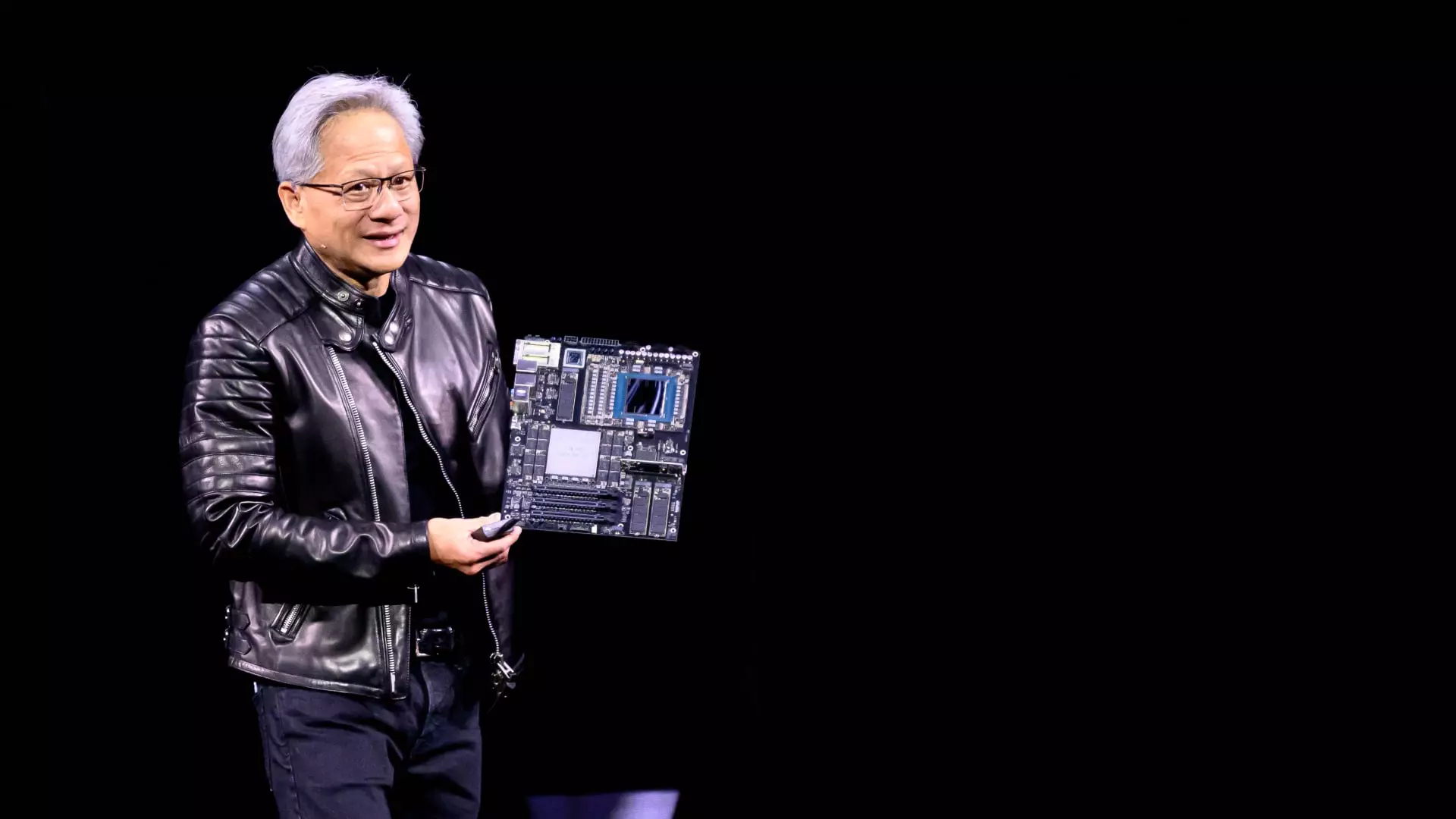In a landscape increasingly defined by rapid technological advancements, Nvidia’s recent keynote by CEO Jensen Huang serves as a stark reminder of the critical importance of processing power. At the GTC conference, Huang’s unequivocal message was that businesses must prioritize acquiring the fastest chips. In an age where artificial intelligence (AI) is no longer a futuristic concept but a present-day necessity, the distinction between merely adequate hardware and cutting-edge processing power cannot be overstated. Huang’s arguments shed light on an essential truth: as we confront the explosive demand for AI capabilities, speed transcends all other metrics when it comes to evaluating chip performance, reshaping the narrative around costs and returns.
Huang articulated a vision about the next decade—one where the phenomenal increases in performance will predicate cost efficiencies that many are still wrestling to comprehend. This assertion is particularly relevant for enterprises that are grappling with the implications of their investments in AI infrastructure. The expectation is that, as processing speeds accelerate, the price of generating AI outputs will naturally fall, thereby enhancing returns for businesses that adopt Nvidia’s cutting-edge technology. By presenting tangible data about the cost-effectiveness of GPUs, Huang is initiating a paradigm shift that places speed at the forefront of economic discussions about AI.
Transforming Infrastructure Investment
The implications of Huang’s insights are profound, particularly for cloud service providers. The stunning performance of Nvidia’s upcoming Blackwell Ultra chips could redefine the revenue potential for data centers, with expectations that they will offer a staggering 50-fold increase in revenue over previous models. This transformation in infrastructure investment is likely to prompt a new wave of spending, as companies begin to anticipate the significant returns made possible by the latest technology. Huang highlighted that substantial investments—projected to be in the hundreds of billions—are already afoot for AI infrastructure, indicating a well-orchestrated bet on the capabilities that Nvidia can deliver.
Nvidia’s strategic foresight in announcing future chip models—Rubin Next and Feynman—signals a commitment not just to respond to current demands but to shape the future landscape of AI technology. The firm is cognizant that large-scale cloud customers require clarity in their long-term planning. With these forthcoming innovations, Nvidia is not just selling chips but investing in the very framework of the AI ecosystem, empowering companies to sculpt their infrastructure around Nvidia’s roadmap, ensuring alignment with cutting-edge technology.
ASICs vs. GPUs: The Flexibility Factor
Huang’s dismissal of custom application-specific integrated circuits (ASICs) as a threat to Nvidia’s supremacy illustrates a significant point of contention within the tech community. While the allure of tailored solutions that cut costs may captivate some, Huang argues that they lack the flexibility needed to adapt to the rapidly evolving nature of AI algorithms. This sentiment resonates strongly in a sector where agility and scalability are imperative. The notion that many custom chip projects languish or are outright canceled underscores the risks associated with investing heavily in less mature technology.
Huang’s confidence in Nvidia’s dominance stems from a belief in the company’s ability to remain ahead of the curve, providing the necessary tools for businesses to leverage rapidly advancing AI capabilities. His insistence that the best solutions must outshine those offered by competitors affirms Nvidia’s commitment to continuous innovation, which is essential as firms navigate the complexities of modern technological landscapes.
The Future of AI and Nvidia’s Role
Ultimately, Jensen Huang’s keynote not only emphasizes Nvidia’s technological prowess but also acts as a clarion call for businesses to embrace the transformative potential of AI. The imperative is clear: as expenditure around AI infrastructure surges, companies must equip themselves with the fastest and most capable processing solutions available. Huang’s insights reveal the subtle yet substantial shift occurring in the tech industry, one where speed trumps cost. It compels organizations to rethink their approach towards investment in AI capabilities, aligning their strategies with the latest advancements that Nvidia brings to market.
In this rapidly changing environment, being ahead of the curve is not merely an advantage; it is essential. As we look to the future of AI, Nvidia is not just an option but increasingly a necessity for those who seek to remain relevant and competitive. Amid the noise surrounding various technological offerings, Huawei’s clarion call resonates louder than ever—the revolution of AI is powered by speed, and Nvidia stands at its helm, ready to lead the charge.


Leave a Reply